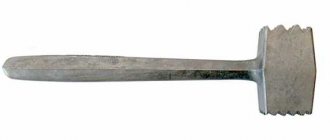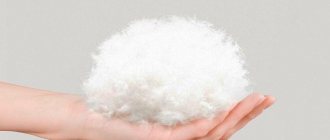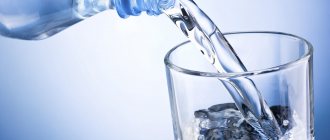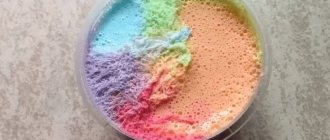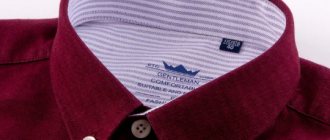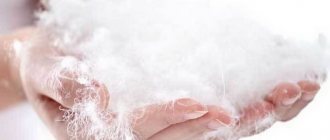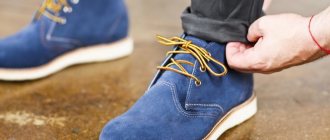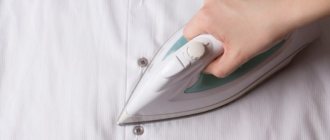Non-woven fabric is an extremely popular and sought-after type of material in modern sewing production. Due to its unusual properties, it is used as a lining for many fabric products. As a result of its use, the strength and wear resistance of the finished product increases, and deformation of individual parts is prevented. In addition, non-woven fabric helps to realize difficult design ideas. It is difficult to do without such material in many production processes: sewing outerwear, thin summer models, and other products.
Non-woven fabric is part of a group of paper-like cushioning materials made from cellulose fibers with the addition of polyester Source protkani.com
Varieties
The fibers from which the cushioning material is produced can be pre-impregnated with a special glue. Depending on whether an adhesive composition was used or not, the non-woven backing is divided into two different types.
Adhesive
A non-woven fabric made of cellulose fiber threads, on the surface of which a layer of glue is applied. The latter can completely cover the material or pointwise. When any fabric part needs to be given special rigidity, then fabric with a continuous coating is used. If the fabric must retain its shape, but at the same time remain light, use a backing on which the glue is applied in separate dots. The adhesive pad is completely attached to the main material. This is done using a household iron.
In most cases, adhesive interlining is used as a temporary lining, most often in needlework Source cs5.livemaster.ru
Non-adhesive
The interlining fabric is not treated with an adhesive composition at all. Such material can be water-soluble or tear-off. The specificity of both options is that they can be easily removed from the fabric surface. Such materials are in demand among needlewomen, since they are extremely convenient to use for manual creative work.
Non-adhesive interlining is used for materials that have a low degree of deformation during operation (mixed, linen, cotton) Source megatex.biz
For example, when hand embroidering using water-soluble non-woven fabric, the threads lie evenly, the fabric always remains smooth and retains its original shape. As a result, the hand-embroidered product turns out to be very neat and attractive. There is no special need to remove the gasket specifically: it will disappear on its own when immersed in water (for five minutes). If tear-off cushioning material was previously used, it should be carefully removed from the base so as not to damage the product itself.
In addition, non-woven fabric is sometimes stitched with threads parallel to the outer part of the panel. This gives the latter additional strength. Moreover, in this case the substrate is called thread-stitched.
Thread-stitched interlining is interlining stitched (quilted) with thread for strength: it holds its shape well and prevents stretching of sections Source statexpro.ru
To process the edges of any product, a non-woven edge is often used - a tape with a width of 10-40 mm, cut from ordinary fabric. With its help it is easier to process the lower parts of skirts and trousers. In order to increase strength, such a product is often stitched with thread and reinforced with soutache cord. The result is a thread-stitched tape.
Thread stitching tape is used for laying in sides, hems, armholes, vents and other elements of clothing to protect them from stretching Source spektrfurnitura.ru
Production
Glue is applied to one side of the thermal fabric; it has a rough texture. Application can be continuous, but spot application is more common. The location and size of the dots vary. The choice depends on the characteristics of the fabric being duplicated:
- for thick wool, drape or leather, choose dublerin with large points located far enough from each other;
- for thin ones, take material with small, closely spaced dots of glue.
Useful
The main advantage and distinctive feature of adhesive fabrics from non-adhesive ones is that they do not need to be attached to the parts of the product with pins and then sewn. Their use in sewing is much more convenient.
What kind of glue is used
Synthetic glue can be used on different bases:
- polyamide;
- polyester;
- polyethylene.
When heated to a temperature of 120-160 degrees and contact pressure, they first melt and then harden. They have a good degree of adhesion to tissues and skin and resistance to mechanical stress. Also resistant to temperature (up to 100 degrees, some have heat resistance up to 160 degrees), microorganisms and fungi, oils. That is, during wearing clothes, washing and simply storing them in unfavorable conditions, the dublerin does not come off.
Self-adhesive fabric comes in different densities and widths, black, white or gray. For translucent products, beige is also used.
Advantages and disadvantages
Users who already know what non-woven lining is and how to use it highlight the following advantages of lining material:
- low cost;
- ease of use;
- practicality;
- huge variety of species;
- resistance to sudden fire;
- high strength, which is easy to check yourself when trying to break;
- resistance to external mechanical damage;
- low susceptibility to various contaminants;
- stable retention of the previously created shape even after strong moisture.
Among the significant disadvantages it is worth highlighting the following points:
- fragility and brittleness in thin materials, excessive density in stronger ones;
- tendency to deformation on the folds of the product;
- low wear resistance (when used open).
Interesting! Ordinary paper can also be conditionally considered one of the varieties of non-woven fabric. But it began to be produced much earlier.
Compound
Like paper, interlining is made from cellulose fibers. Synthetic components are often added to natural raw materials. They give the material elasticity, strength, rigidity, and dimensional stability. May include:
- modified or unmodified cellulose fibers (viscose);
- polyester fibers;
- polyamide (adhesive).
Matter is considered to be semi-synthetic. But in fact, on the information label you can often see the composition - 100% polyester or 100% viscose.
Application area
Many people don’t even know what non-woven fabric is needed for. And this is despite the fact that the scope of its application today is very extensive. When purchasing clothes or some other textile, most buyers are not aware of the presence of such fabric inside the product itself. With its help they duplicate:
- linings, edges, seams in jackets or coats;
- belts, collars, cuffs, flaps of trouser pockets, dresses, shirts.
It is difficult to do without such a substrate in the process of making high-quality soft toys and various accessories. In modern needlework, a special cushioning fabric is used: it dissolves easily after the first wash and has extremely convenient markings applied to it.
In addition to the textile industry, non-woven backing is widely used in the manufacture of finishing products in construction. Additionally, water-soluble non-woven fabric is used in medicine instead of conventional dressing material.
Non-woven wallpaper - a coating consisting of two layers: a decorative top layer and a non-woven backing Source images.ua.prom.st
Features of working with the material
It's hard to go wrong with adhesive - you just need to go over it with an iron. But there are several nuances in processing parts and repairing clothes.
As a gasket
Before cutting out the parts, the dublerin and non-woven fabric are sprayed with water from a spray bottle. This is called decatification - forced shrinkage of the cushioning material so that the item does not warp after the first wash. Just don't soak or wash - the glue will wash off.
When cutting woven materials, you need to take into account the direction of the grain thread. For non-woven fabrics, the cutting direction is determined by elasticity, stretching along the sides.
To glue adhesive fabric with an iron, a cut piece or tape is placed between two parts and then duplicated through gauze. The iron temperature is from 100°C, depending on the base material.
Important! Do not duplicate thin silk, cotton, wool with non-woven fabric through wet gauze. The material may wrinkle.
If you use a paper-based web, remove the paper after gluing it on one side. Then place the second piece on top and iron again.
Product repair
Adhesive fabric can be used to repair cuts on clothing, creating an invisible but strong seam. A colorless spider web without a base is best suited for this. You need to cut out 2 identical parts - any lining material and a web.
A lining material is placed under the cut, and a spider web is placed on it. It turns out to be a sandwich: product, web, lining. Before duplicating with an iron, align the edges as close to each other as possible.
Important! Do not drag the iron across the material - move the cut. Carefully lift and lower the soleplate to ensure a clean job.
Glue-based fabric is also used to shorten trousers and jeans without a sewing machine. The cut is folded and then duplicated with an iron.
How to remove glue from fabric
If you didn’t succeed in gluing it correctly the first time, don’t rush to throw it away and start again.
There are several ways to correct the situation.
- Hot steam. If you steam the adhesive with a steam generator or an iron, it will separate from the fabric. But there will still be some glue left on the base.
- Solvents. You can remove glued dublerin, interlining and cobwebs with vodka, nail polish remover, or acetone. The safest option is alcohol or vodka; they leave no streaks behind.
- Wash. Long soaking and then thorough hand washing helps to separate the adhesive. But this method is not suitable for thin materials - they may warp.
Fabric selection
The flazeline gasket is selected exclusively for the specific material from which the products are planned to be sewn. Usually, experienced craftsmen know how to use non-woven fabric, so they stock up on several varieties of such material in advance. To determine the most profitable option for yourself, you should put completely different types of non-woven strips on a small piece of the main fabric, then carefully iron them and analyze the result. The most suitable is considered to be the non-woven material that is completely impossible to notice from the front side of the product and is held most firmly on the base.
Before buying cushioning material, you need to think about what fabric it is suitable for and for what purpose it will be used Source tkanix.guru
For inexperienced craftswomen, modern fashion magazines with different patterns and patterns for embroidery must include information about interlinings.
| Nonwoven brand | Thickness (mm) | Duration of gluing, s | Application |
| N-180 | 0,35 | 8 | Lightweight, lightweight fabrics |
| N-200 | 0,32 | 8 | Lavsan, cotton |
| N-405 | 0,4 | 8 | Viscose, silk |
| N-410 | 0,4 | 10 | Any fabrics |
| N-420 | 0,4 | 10 | Leather, velor |
Important! The density of the selected non-woven backing must necessarily correspond to the type of main fabric. Otherwise, there is a high probability that the lining will subsequently deform the working material.
The density of the selected non-woven backing should correspond to the type of main fabric Source i0.wp.com
What cut details need to be duplicated?
Some recommendations on which cut details you need to use adhesive fabric for.
Collars. The collar pad is cut out according to the pattern of the upper collar and placed on the upper collar, not on the lower one. If the lower collar is one-piece cut with an upper collar, then in this case the gasket is glued to the upper part of the collar. If the collar is cut with a stand, then the interfacing is also applied to the top part of the collar and the part of the stand adjacent to the neck. Separately, you can cut out a spacer (and glue it) for the outer part of the stand (without the lower collar).
Shelves for coats and jackets. In products with lapels, the padding is placed on the edge of the product. The edge of the hem and the lining is overcast or processed in any of the possible ways.
Leaflets, flaps, cuffs and waistband. The gasket is placed on the part that will be the top in the finished product.
How to glue non-woven fabric
When working with such cushioning material, it is important to adhere to simple rules. Often, a lack of skills in gluing such material leads to significant curvature of the surface of the base and rapid peeling of the backing itself. The following recommendations will prevent the above problems from occurring:
- Despite the non-woven origin of the cushioning material, the fabric must be cut along the edge, similar to ordinary fabric.
- A practical method is to determine in advance the optimal temperature, as well as the duration of the influence of the hot iron, at which gluing occurs ideally. In addition, it is important to focus the temperature indicator on a more sensitive material.
- You can avoid accidental damage to the main material or the surface of the heating device by using an ironing iron (auxiliary cotton material). It can be used as a small piece of calico.
- During operation, it is necessary to move the iron from one place to another evenly. The duration of the delay at the same point is about ten seconds. Do not continuously move the tool across the fabric surface. Otherwise, the adhesive layer will simply stretch, and multiple bubbles and distortions will appear on the fabric.
- After completing the gluing procedures, it is important to wait until the part has completely cooled down. The latter will prevent possible separation of the cushioning material and deformation of the element.
Having learned how to properly glue non-woven fabric to fabric, you can do this work yourself if necessary. This will help you sew high-quality clothes and make attractive home textiles.
Assortment of items
Adhesives are presented in different forms with their own characteristics and purposes.
- Dublerin is a one-sided woven or knitted interlining. Sold in sheets 80-150 cm wide. The material is cut into strips for processing straight parts.
- Non-woven fabric is a one-sided or double-sided adhesive fabric made from cellulose and polyester fibers. There are rolls 30-100 cm wide and grosgrain ribbon with stitched texture.
- The side seal is a non-woven cotton material resembling felt. Suitable for gluing the bottom, walls, and handles of bags.
- Decovil is a leather-like version of non-woven fabric. Used as a seal for bags, backpacks, belts.
- Adhesive padding polyester is a dot-based fabric sealant.
- Gossamer is an adhesive tape for fabric made of polyamide threads with or without paper backing. Narrow tapes are most often used, but there are also meter rolls.
Flaws
The disadvantages of the canvases are fragility. This applies to thin varieties that strongly resemble paper and “behave” like paper. That is, when crumpled, they do not restore their shape and retain creases. In contrast, thick versions of interlining sheets are very rigid and therefore inconvenient to work with. They can be compared to plywood - they are ideal for strengthening simple elements, but cutting out shaped parts from them is problematic.
If the adhesive layer is applied evenly, the hardener holds better, but it looks tough and makes the product heavier. Spot coating gives flexibility and is more suitable for strengthening fabrics. When the non-woven layer goes on its own, that is, is not covered with a lining, then there is a high probability that during operation the fabric will fluff up and cease to perform its functions. In this case, the cushioning material is covered from the inside with another layer of fabric, or a reinforcement on the lining is initially purchased.
A simple pattern and description of an elegant chiffon dress with lining
A light, elegant, elegant dress is the dream of every woman, but not everyone has the opportunity to buy such a product. First of all, this applies to ladies with chic volumes. At the same time, you shouldn’t despair, because you can sew such a dress from chiffon yourself. We offer a simple pattern for girls with size 52 with a length of one meter below the waist. Let's take for it:
- 4.30 m of peach-colored crepe chiffon with a fabric width of 1.4 m.
- 4.30 m of silk pongee (for lining) with a width of 1.4 m.
- 1 hidden zipper, 40 cm long.
- Nonwoven formband.
Pattern:
- Before sewing, it is necessary to transfer all the details of the pattern onto the fabric. You should have two upper front parts, one upper back part, one lower front part, one lower back part, 4 wedges. In addition, prepare a bias tape for the neckline 3 cm wide, 105 long. Leave 2 cm for allowances. Duplicate the lining fabric parts, except for the binding.
- Assemble the parts of the front (first sew the two upper parts of the front, then attach the upper part of the back to them) and the bottom (sew godet wedges into the lower parts of the front and back, connect these parts to each other, you get a skirt), process the neckline of the dress. Connect the top and bottom of the dress. Repeat with the lining pieces.
- When patterning the underskirt, make it 3 centimeters shorter than the main one. Sew in a zipper, finish the seams, neckline, and bottom of the dress. Use bias tape to finish the neckline. Lastly, sew on the lining.
Sewline water-soluble glue stick
Volume : 7 g.
Price : 430 rub.
Sewline glue sticks were created using innovative technology, thanks to which the fabric can be washed and bent without fear that the glued seams will come apart. This glue easily joins layers of fabric intended for sewing, and after that it is also easy to wash off with water.
After drying, the glue leaves no traces. Thanks to the interesting idea, it is very convenient to use the glue - the rod extends. You can immediately purchase a package of replacement rods. Externally, the glue is almost indistinguishable from the pen, and only after you open the cap you will see blue glue.
Care
Before we talk about care, let's figure out how to use the material. Adhesive sheets must be ironed. The temperature regime is determined by the properties of the main fabric. If it is silk or wool, then set the minimum temperature. You also cannot do without additional fabric through which ironing is carried out. It is better to choose a thin cotton fabric, for example, white chintz or calico. Do not dampen the fabric - ironing should be done in dry mode.
The hardener is applied with the adhesive side inward. Unlike cobwebs, which consist of glue, non-woven fabric has a one-sided adhesive coating
And it is important not to mix up the adhesive side. Use an iron to press the part well, heating it for at least 8 seconds.
You cannot iron the surface as you would during normal ironing, otherwise the reinforcement will stretch and stick incorrectly. Further manipulations with the product are carried out only after the part has completely cooled.
How to care for products with non-woven lining? In this case, care is determined by the properties of the main fabric. You can focus on the general markings inherent in reinforcing fabrics:
- RA - washing is prohibited;
- PET - the product can be washed by hand and by machine;
- PES - delicate wash allowed at temperatures up to 40°C.
Dear readers of the Tkan.Club website, if you still have questions on this topic, we will be happy to answer them. Leave your reviews, comments, share stories if you have dealt with this material! Your life experience may be useful to other readers.

